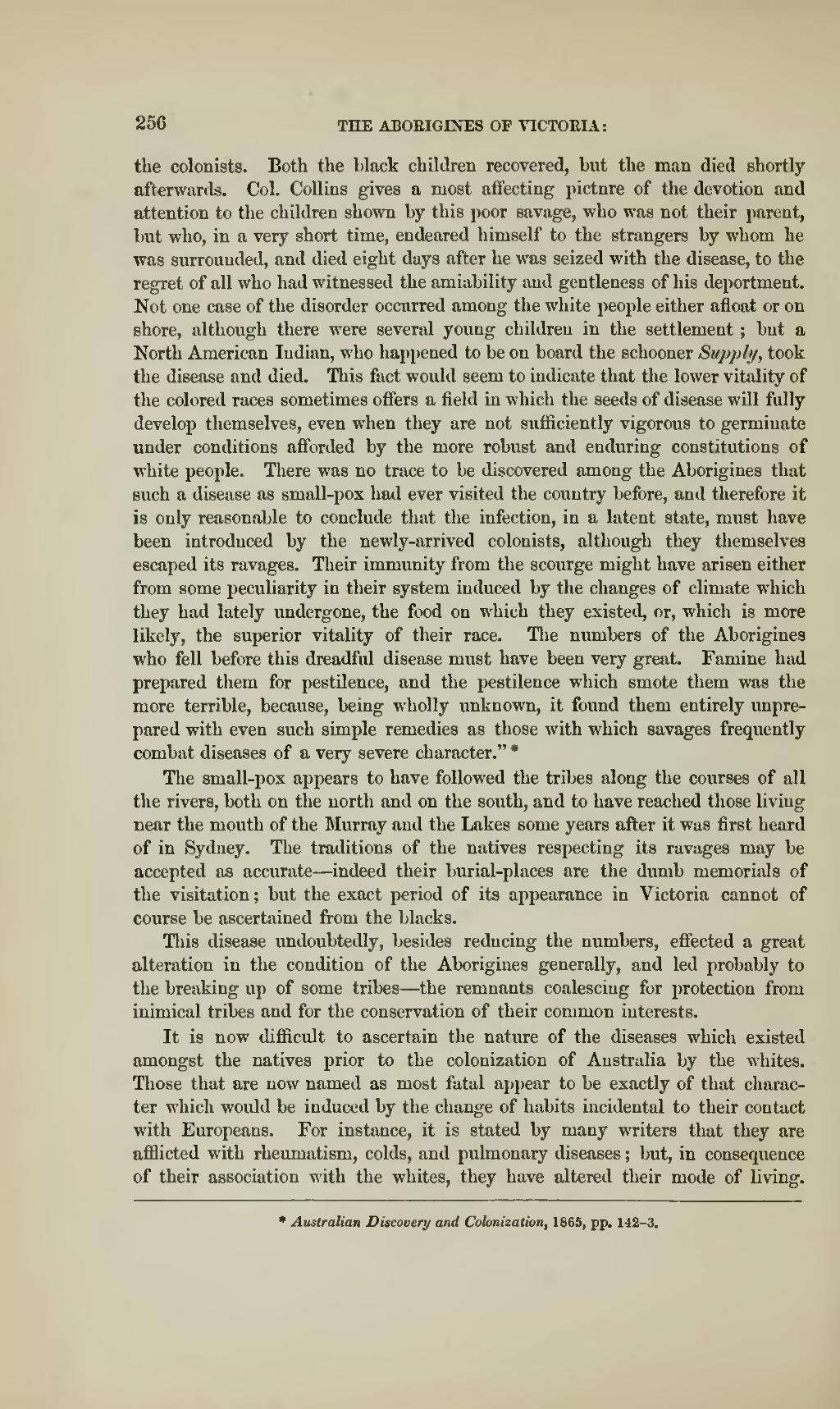the colonists. Both the black children recovered, but the man died shortly afterwards. Col. Collins gives a most affecting picture of the devotion and attention to the children shown by this poor savage, who was not their parent, but who, in a very short time, endeared himself to the strangers by whom he was surrounded, and died eight days after he was seized with the disease, to the regret of all who had witnessed the amiability and gentleness of his deportment. Not one case of the disorder occurred among the white people either afloat or on shore, although there were several young children in the settlement; but a North American Indian, who happened to be on board the schooner Supply, took the disease and died. This fact would seem to indicate that the lower vitality of the colored races sometimes offers a field in which the seeds of disease will fully develop themselves, even when they are not sufficiently vigorous to germinate under conditions afforded by the more robust and enduring constitutions of white people. There was no trace to be discovered among the Aborigines that such a disease as small-pox had ever visited the country before, and therefore it is only reasonable to conclude that the infection, in a latent state, must have been introduced by the newly-arrived colonists, although they themselves escaped its ravages. Their immunity from the scourge might have arisen either from some peculiarity in their system induced by the changes of climate which they had lately undergone, the food on which they existed, or, which is more likely, the superior vitality of their race. The numbers of the Aborigines who fell before this dreadful disease must have been very great. Famine had prepared them for pestilence, and the pestilence which smote them was the more terrible, because, being wholly unknown, it found them entirely unprepared with even such simple remedies as those with which savages frequently combat diseases of a very severe character."[1]
The small-pox appears to have followed the tribes along the courses of all the rivers, both on the north and on the south, and to have reached those living near the mouth of the Murray and the Lakes some years after it was first heard of in Sydney. The traditions of the natives respecting its ravages may be accepted as accurate—indeed their burial-places are the dumb memorials of the visitation; but the exact period of its appearance in Victoria cannot of course be ascertained from the blacks.
This disease undoubtedly, besides reducing the numbers, effected a great alteration in the condition of the Aborigines generally, and led probably to the breaking up of some tribes—the remnants coalescing for protection from inimical tribes and for the conservation of their common interests.
It is now difficult to ascertain the nature of the diseases which existed amongst the natives prior to the colonization of Australia by the whites. Those that are now named as most fatal appear to be exactly of that character which would be induced by the change of habits incidental to their contact with Europeans. For instance, it is stated by many writers that they are afflicted with rheumatism, colds, and pulmonary diseases; but, in consequence of their association with the whites, they have altered their mode of living.
- ↑ Australian Discovery and Colonization, 1865, pp. 142-3.
